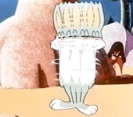Dartmouth
GreenLite Dartmouth - A system for real-time energy use feedback using interactive animation, in order to encourage resource conservation. How do we persuade people to change behavior? What information and feedback is effective in motivating people to conserve resources? (Loeb and GreenLite Dartmouth team) Based on research in information visualization, sociology, computer science, engineering, environmental science, interaction design and cognitive psychology, we provide information in ways that motivate people to change behavior. In its simplest form, we begin with an animated polar bear. When energy use is low, the bear is happy; when it is high the bear’s health and happiness is endangered. The bear’s “mood” is based on algorithms weighing historical energy use data, demographics, weather, pricing and other relevant data against current use.
Papers, Posters, Publications and Patents:
-
•International Journal of Environmental, Cultural, Economic and Social Sustainability (for publication January 2010- peer reviewed) Unplug or the Bear Gets It! .pdf
-
•Patent Pending (US and PCT): Method for real-tim energy use feedback using animation
-
•Finalist for Microsoft’s Research Award (GreenLite Poster Siggraph-1.pdf)
Motion Manifolds - Our language offers concise and descriptive terms to describe complex
motions. We are developing complex algorithms that allow for the automatic
summary of 4-D motion capture data into a perceptually meaningful,
low-dimensional manifold, that can be quickly understood, accessed and
edited. (Farid and Loeb) Funded by NSF Grant #CNS-0708209.
Motion and Brain Studies - A collaborative study set to discover (1) how the brain responds to motion capture data applied to images rendered in various ways and (2) how the brain distinguishes real motion from cartoon motion.
Chris Bregler, Lorie Loeb, Erika Chuang and Hrishi Deshpande
Cartoon Capture and Retargetting - Animation has undergone dramatic shifts and trends and has grown into one of the most influential media over the last few decades. Currently the techniques used fall into one of two dominant paradigms: Either traditional trained animators create key-frames using computer tools, or an actor performs the desired motion, and motion capture techniques map their motion onto digital models. In fact, most production houses are polarized among one of these two extremes. The goal of this project is to bridge the gap between these two extremes.
SIGGRAPH 2002 paper pdf (1.2M)
Hi-res video
More information about the Movement Group at Stanford
Interval Research
Tom Ngo, Jenny Dana, Doug Cutrell, Bruce Donald, Lorie Loeb, Shunhui Zhu
Embedded Constrained Graphics - Our goal is to embed free-form constraints into a graphical model. With such constraints a graphic can maintain its visual integrity-and break rules tastefully-while being manipulated by a casual user. A typical parameterized graphic does not meet these needs because its configuration space contains nonsense images in much higher proportion than desirable images, and the casual user is apt to ruin the graphic on any attempt to modify or animate it.
We therefore model the small subset of a given graphic's configuration space that maps to desirable images. In our solution, the basic building block is a simplicial complex-the most practical data structure able to accommodate the variety of topologies that can arise. The configuration-space model can be built from a cross product of such complexes. We describe how to define the mapping from this space to the image space. We show how to invert that mapping, allowing the user to manipulate the image without understanding the structure of the configuration-space model. We also show how to extend the mapping when the original parameterization contains hierarchy, coordinate transformations, and other nonlinearities.
Our software implementation applies simplicial configuration modeling to 2D vector graphics
SIGGRAPH 2000 paper pdf (240KB uncompressed)
Video
NYU
Ken Perlin, Lorie Loeb
A Multiscale Approach to Interactive Display Organization - An alternative to Window/Icon based interfaces that allows users to handle infinite quantities of information at arbitrary scales through recursive zoomable views and hyperlinks on a virtual surface. (Presented by Ken Perlin at ACM SIGCHI 1991)
The Scratch Program - A very early 2D computer animation program that utilized concepts from traditional film animation and editing.


